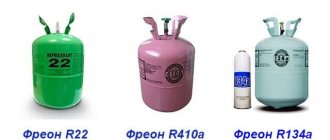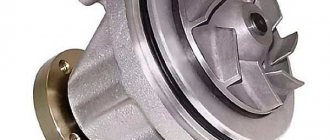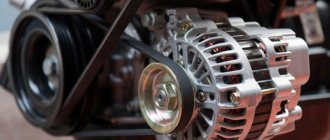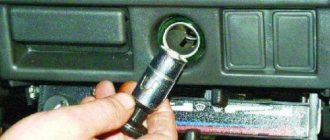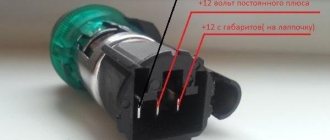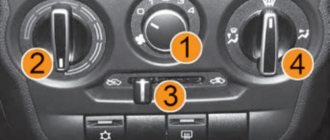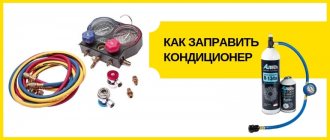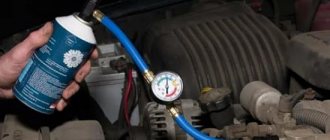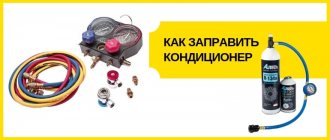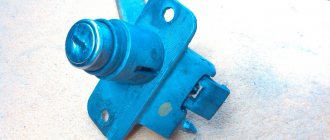After the appearance of the first internal combustion engines, the main task of designers and engineers from the very beginning was to increase the performance of the power plant. In other words, the main goal is to increase engine power. As you know, the simplest way is to physically increase the engine displacement and the number of cylinders. The engine “sucks” more air from the atmosphere, as a result more fuel can be burned.
At the same time, such power units with an increased displacement are large in size and weight, they are expensive to produce, it is not always possible to place such a motor in the engine compartment of a compact passenger sports car, etc. Another way to increase engine power is to build a unit that will “produce” the required power and torque without increasing the volume of the combustion chamber.
The problem can be solved by forcing air into the cylinders under pressure. To pump air into many internal combustion engines, turbocharging is used; another solution is a compressor (mechanical supercharger). In this article we will look at how a car compressor works on an engine, as well as what pros and cons a compressor engine has.
How does the air conditioning system work in a car?
The compressor is driven by a belt from the crankshaft.
The compressor compresses the refrigerant entering it in a gaseous state. When refrigerant is compressed, a lot of heat is released. The refrigerant, compressed and heated to approximately 100°, enters the radiator-condenser . Passing through the condenser, the refrigerant is cooled to approximately 45° and changes from a gaseous state to a liquid state. Those. condenses. The receiver-dryer located on the condenser accumulates liquid refrigerant. In its flask there is a desiccant substance that absorbs moisture after assembling and vacuuming the entire system. The same flask may also contain a filter that retains compressor wear products.
On our YouTube channel you can watch a video review about car air conditioners.
You can select and buy an air conditioning compressor for your car in our used spare parts catalog.
From the condenser, liquid refrigerant is directed at a fairly high pressure of about 17 bar to the evaporator. On its way to the evaporator, it passes through an expansion valve or expansion valve . This valve has 2 functions: to reduce the refrigerant pressure and to regulate its supply to the evaporator. Passing through the expansion valve, the refrigerant pressure drops to 4 bar. In this case, the refrigerant evaporates and absorbs heat from the environment, cooling to 10°. At this temperature it enters the evaporator.
Instead of a thermal valve, an expansion throttling insert can be used, which continuously meters the supply of freon to the evaporator. In this case, liquid refrigerant collects in the evaporator. In this condition, it should not get into the compressor, which will cause water hammer. Therefore, on the way to the compressor, the freon enters a separate battery, in which it is simply evaporated.
The evaporator belongs to the interior ventilation system. The fan directs the air entering the cabin to it. In the evaporator, the refrigerant evaporates, removing heat from the environment. Those. it cools and dries the air passing through the evaporator. The refrigerant evaporated in the evaporator is again sent to the compressor.
You can select and buy an air conditioning evaporator for your car in our catalog of used spare parts.
The accumulator-drier is used in an air conditioning system with a throttling insert instead of a thermal valve.
In general, during operation of the entire air conditioning system, the evaporator temperature is maintained at a certain level, about 10°. Regulation is carried out in the same expansion valve, but in a different circuit with a thermostat. It goes like this. The more the refrigerant heats up in the evaporator, the higher its pressure will be. This pressure pushes on the thermostat membrane. Thus, the warmer the refrigerant leaving the evaporator, the more it presses on the membrane, which through the rod opens the ball valve more strongly, which releases more refrigerant to the evaporator.
TURBO - NOT TURBO
In short, there are now many design varieties of compressors. Some work using the energy of exhaust gases (TURBO), others - using a drive (NOT TURBO). It is the latter that we will talk about today. By the way , which is better, a turbine or a compressor, you can read at the link.
If you examine the design of such units, you can identify a certain similarity in structure. Namely, such compressors operate from a drive that does not require intervention in the standard engine systems, namely the lubrication and exhaust gas system, which is very important! This design is really very simple - a direct connection is established with the “crankshaft”, which allows the engine and supercharger to interact perfectly during acceleration. That is, the higher the speed, the faster the “crankshaft” rotates, and accordingly the supercharger spins! Thanks to this interaction, there is practically no such thing as “turbo lag”. Also, an additional advantage is the lack of operation at high temperatures, like with TURBO options, which means that the service life is greatly increased - after all, there is no need for the “turbine” to cool down, that is, “turbo timers” or “boost controllers” are not necessary, we just turn off the car and work stops. The site autoflit.ru recommends doing exactly the same. If you're interested, come in.
Types of air conditioning compressor in cars
There are 3 types of air conditioning compressors used on cars. The most common type: piston. There are options with variable and fixed displacement. Accordingly, the compressor design can have from 5 to 7 pistons or 10 pistons. Piston compressors can have either variable or permanent drive.
Rotary type compressors are less common. The rotor can have blades or be a movable spiral immersed in the same fixed spiral. Both types of rotary compressors are common on Japanese cars.
Since 2012, air conditioning compressors with an electric drive and a spiral rotor have been increasingly used.
What is a car compressor, and what types are they?
A car compressor is a device that automatically inflates car tires.
There are two types of auto compressors: membrane and piston.
Diaphragm (vibrating) compressors inflate a car wheel using a rubber plug that moves back and forth very quickly, thus absorbing air from outside into the tire. In such compressors, the rubber plug most often fails, which is easy to replace.
A piston compressor pumps air into the tire in the same way as a diaphragm compressor, but using a special piston. The main positive quality is considered to be high speed of work.
How does the displacement of a compressor change?
When high compressor performance is required, gaseous refrigerant under high pressure enters its inlet. As we know, his blood pressure increases because... too much refrigerant has evaporated in the evaporator.
This pressure pushes on the compressor pistons. In this case, the control valve relieves gas pressure from the crankcase into the suction line. In this case, the suction pressure above the pistons will be higher than the pressure that “props” them out of the crankcase. Consequently, this pressure will force the pistons to increase their stroke. Thus, the working volume of the compressor cylinders also increases.
When less refrigerant evaporates in the evaporator, the suction line pressure will be lower. To reduce the working volume of the cylinders, part of the gas (refrigerant) compressed by the pistons is directed into the crankcase. This pressure puts pressure on the pistons from behind, causing them to reduce their stroke.
Thus, the change in the working volume of the compressor occurs due to the balance of forces on the pistons and below them - in the crankcase.
Compressor oil
In addition to the refrigerant, the air conditioning system contains a special oil. It lubricates all friction pairs. Oil circulates throughout the entire circuit and is also present in the compressor crankcase. Depending on the type of compressor and the refrigerant used, different types of oils are used, which absolutely cannot be mixed with each other, because Paraffin may form and clog the system.
Compressor oil is completely transparent and almost colorless. It may have a bright green color if it contains dye.
Malfunctions and breakdowns of the compressor and air conditioning system
The most common failure of an air conditioning system is refrigerant leaking through leaking seals or cracks. If there is a lack of freon, the performance of the air conditioning system decreases. When the freon level is very low, the system can completely turn off the compressor to avoid its breakdown. A low level of freon is determined when refilling it by the quantity and pressure drops in the system. Compressor oil leaks indicate a large hole. Although in most cases it is necessary to add a special dye to the system, visible in ultraviolet light.
The enemies of the cylinder-piston group or compressor rotor are increased friction due to lack of oil or increased refrigerant pressure. Also, increased pressure leads to overheating of the compressor and the oil, which becomes too liquid. These factors lead to friction pairs rubbing against each other, and the entire system becomes clogged with aluminum powder.
Why does refrigerant overpressure occur? The first reason is factors that prevent normal condensation. This is a dirty condenser or a non-working fan on it. Also, excess pressure can be caused by an excess amount of refrigerant charged.
If metal shavings get into the air conditioning system, it must be washed out and even the evaporator and condenser must be replaced. Otherwise, the chips will very quickly finish off the newly installed compressor.
Failures of other mechanical and electronic components such as expansion valve and control valve are quite rare. They manifest themselves in the fact that the air conditioner does not cool as it should, but there is enough freon in the system and there are no leaks.
Constant drive clutch
Air conditioning piston compressors are often permanently driven. Those. their shaft constantly rotates when the engine is running, there is no electromagnet in the pulley, and no wires are connected to the clutch.
Permanent drive clutches can be plastic or metal and can be belt driven or shaft driven. Inside such a coupling there are always simple rubber dampers. The dampers are located between the pulley and the drive plate, which is mounted directly on the compressor shaft. The drive plate is also called a "stall" or "safety" plate.
This means that if the compressor shaft is jammed or there is excess pressure in its housing, the drive plate is literally destroyed: a break occurs in a special safety element or section of the plate. This breaks the connection between the shaft and the compressor pulley. Also, breakage of the safety plate occurs due to runout of the drive belt, a malfunction of the tension roller, or jamming of the generator overrunning clutch.
Other drive plate failures are also possible. A permanent drive clutch that has served for a long time may begin to knock while the engine is running. The knocking occurs due to the destruction of rubber dampers and the appearance of play. Those. The drive plate connecting pins will click against the grooves in the pulley. After some time, ignoring the knock leads to all the pins being cut off, i.e. again, the connection between the pulley and the compressor shaft is destroyed.
Some cars use permanent drive compressors, the coupling of which does not have an elastic damper, but uses a shock-absorbing weight. Such couplings are destroyed due to problems with the tension of the drive belt.
The permanent drive clutch rotates on a bearing mounted on the neck of the front cover of the air conditioner. If there is play in the bearing, in most cases it can be replaced with a new one. But at the same time, the seating plane on the neck should not be worn out.
When installing a new drive plate on many VAG compressors, it is extremely important to remember to install a shim on the compressor shaft. Without it, when screwing, the plate will simply break as intended by the manufacturer in the event of a jammed compressor shaft.
What is a car supercharger? Its types and detailed analysis of nuances
The quality of the air-fuel mixture (AFM) supplied to the engine plays an important role in increasing power. By pumping air into it, the power can be increased up to 50%. This is achieved by using a supercharger to add air volume to the engine.
Types of superchargers
- Mechanical. The device uses the mechanical force generated by the movement of the crankshaft;
- Turbocharging A supercharger driven by "exhausts" is used;
- Electric. Driven by electric current from a generator and battery;
- Combined. It uses several of the schemes proposed above in its action.
Electromagnetic clutch
The second option for driving the air conditioning compressor is using an electromagnetic clutch. In this case, the pulley and compressor shaft are not in permanent connection. The pulley is mounted on a bearing mounted on the neck of the front cover of the compressor housing and rotates freely from the attachment belt. A drive plate with a rubber or spring damper is connected to the compressor shaft. There is an electromagnetic coil inside the pulley. When voltage is applied to it, a magnetic field is created that attracts and presses the drive plate to the pulley. In this case, the pulley and compressor shaft rotate together as one unit. When the voltage is removed from the coil, the drive plate disengages from the pulley: a gap is created between them.
Most often, the electromagnetic clutch begins to slip. Namely, the drive plate slips relative to the pulley. Not in all cases, slippage begins due to wear of the mating surfaces of the coupling. Usually, excessive refrigerant pressure appears in the compressor itself, which puts a lot of stress on the clutch and causes it to slip.
Well, then the destruction process goes very quickly: the rubbing drive plate and pulley destroy the mating surfaces, and a lot of heat is released, which bakes the rubber components and can burn the electromagnetic coil.
The clutch is protected from overheating as a result of slipping by a thermal fuse, which opens the power supply circuit of the electromagnet.
Some types of couplings have a rubber drive plate damper, which is destroyed if the compressor shaft rotates with increased force or is jammed.
Play in the entire coupling occurs due to wear of the bearing and journal of the front cover of the compressor housing. If the journal is worn out, then even after installing a new bearing the pulley will rotate with play and runout.
Disadvantages of engines
Since the compressor is started using the engine crankshaft, this slightly reduces the power of the power unit. The compressor increases the load on the engine, so the engine must be strong enough to withstand strong explosions in the combustion chamber. Modern automakers take this condition into account and create stronger units for engines designed to work in tandem with a compressor, which increases the cost of the car, as well as the cost of its maintenance.
Overall, superchargers are the most effective way to add horsepower, or power in other words, to a vehicle's engine. The compressor can add from 50 to 100% of power, which is why racers and fans of high-speed driving often install it on their cars.
Clutch bearing
If the clutch bearing falls apart, the clutch rattles and plays during engine operation. If you neglect these symptoms and do not rush to service, the bearing may rotate and lift up the neck of the compressor front cover. In this case, even after installing a new bearing or coupling, the pulley play will not go away. For a complete repair, you will have to buy either a new front cover or a used compressor. There are also options with neck restoration.
Also, a loose clutch quickly wears out the drive belt and its tension roller.
conclusions
Most likely this pump is an attempt to copy the VIAIR 70P, since the appearance is very similar. But something tells me that viair is made better. I can't say that today these tornadoes are still as disgusting as my old one. It may very well be that they have become even better. I don’t even rule out that for those who need a pump once every 10 years, this pump is just the right option. But if you travel around our country and drive into all sorts of wilds where you can get a flat tire, and the nearest installation is 100 kilometers away, this is DEFINITELY not your option!
But something tells me that viair is made better. I can't say that today these tornadoes are still as disgusting as my old one. It may very well be that they have become even better. I don’t even rule out that for those who need a pump once every 10 years, this pump is just the right option. But if you travel around our country and drive into all sorts of wilds where you can get a flat tire, and the nearest installation is 100 kilometers away, this is DEFINITELY not your option!
